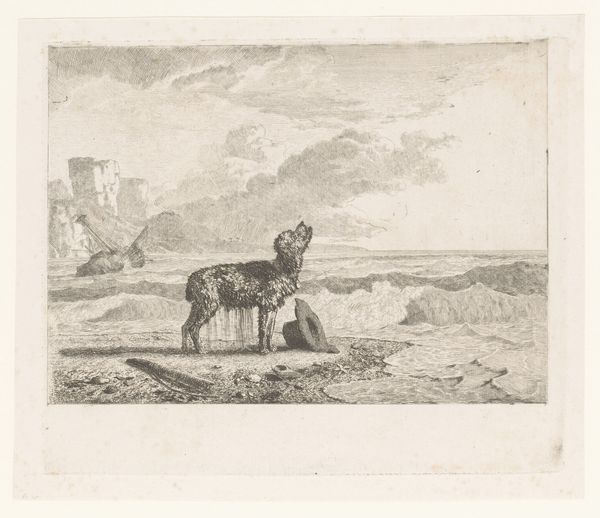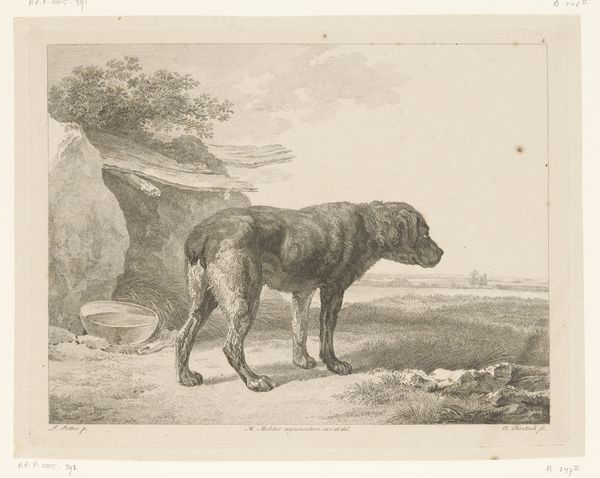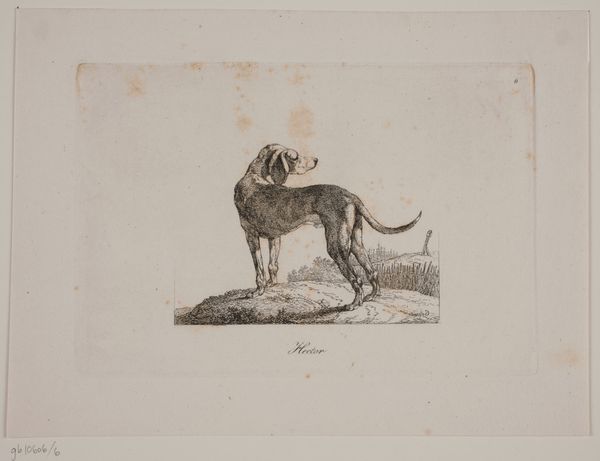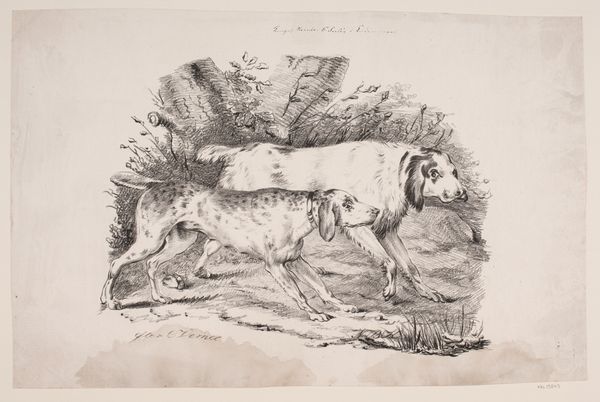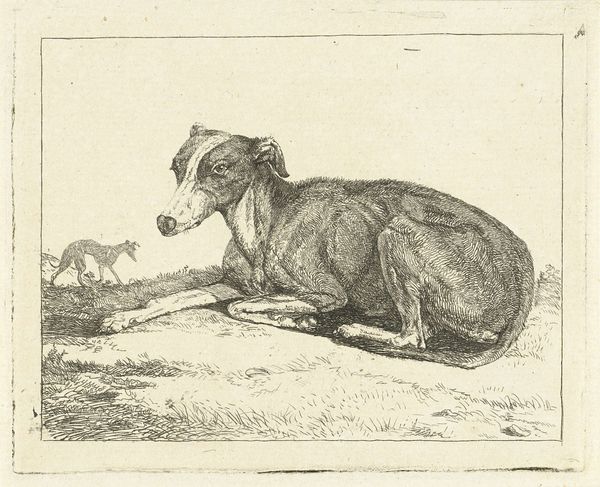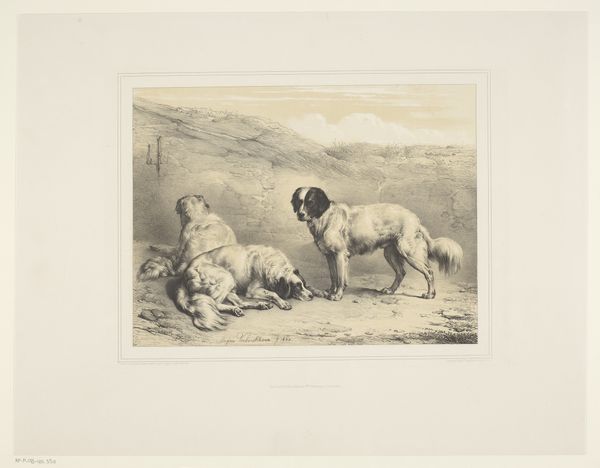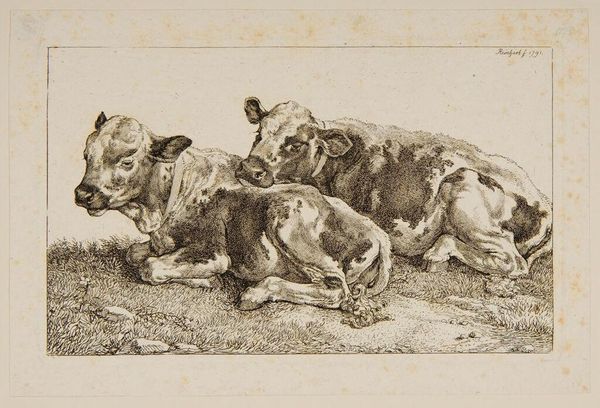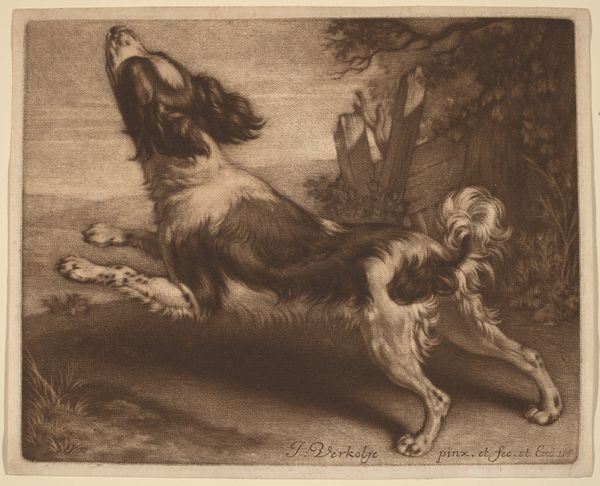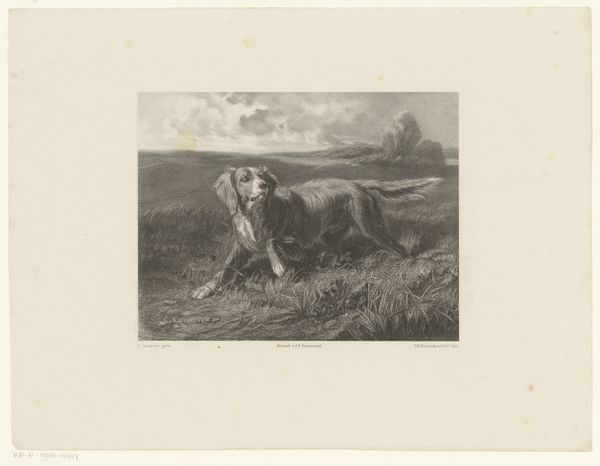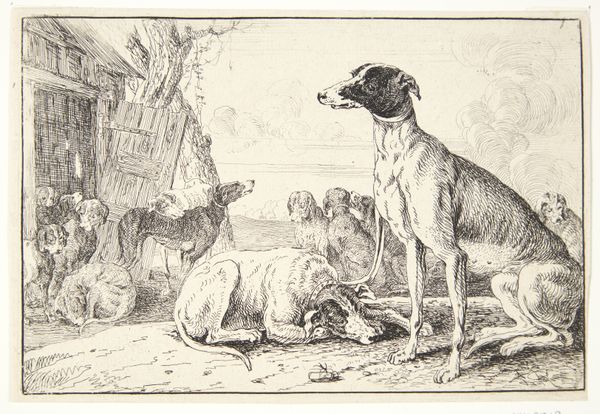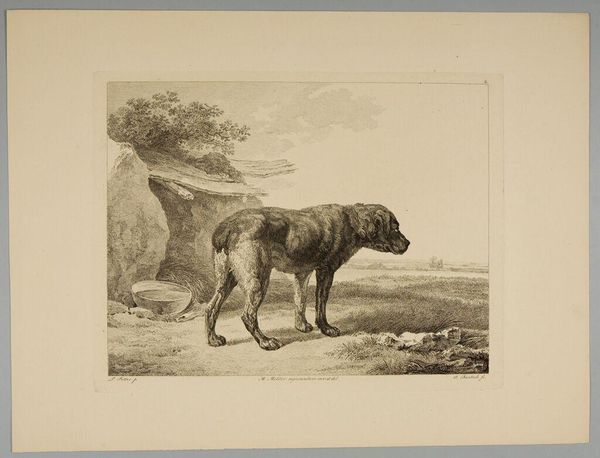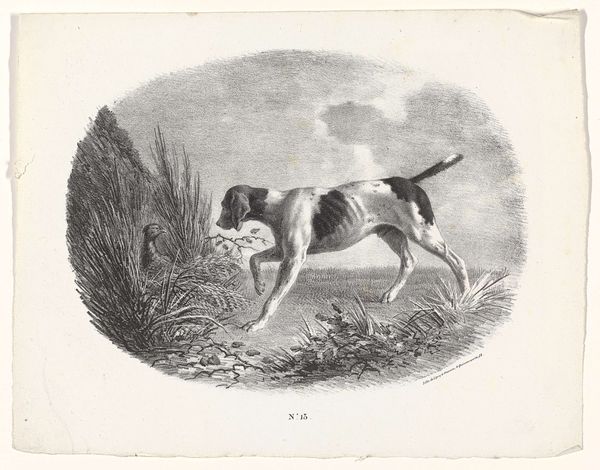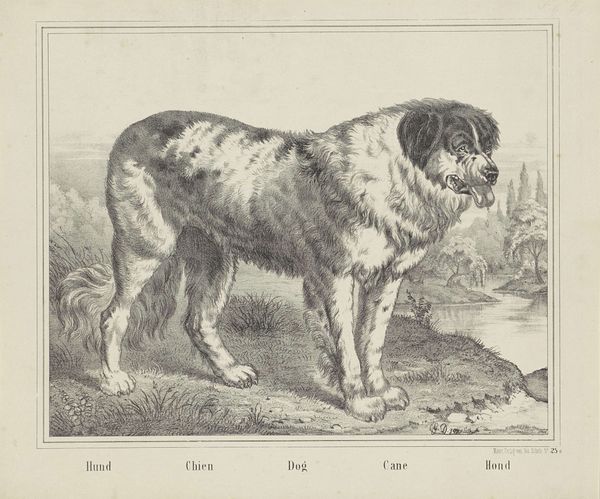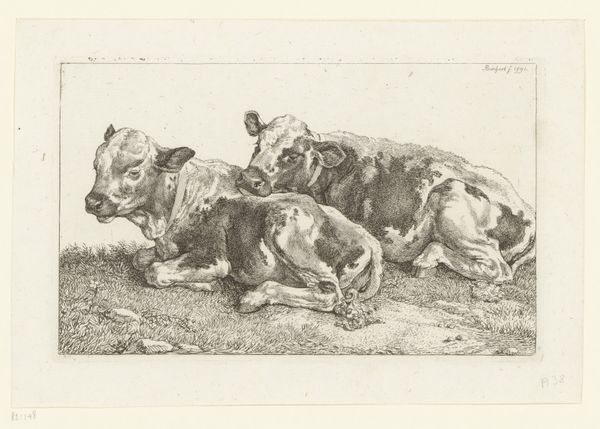
Fotoreproductie van een prent naar een schilderij van Edwin Henry Landseer c. 1860 - 1870
0:00
0:00
Dimensions: height 105 mm, width 138 mm
Copyright: Rijks Museum: Open Domain
Editor: Here we have a photographic reproduction, a gelatin silver print, made sometime between 1860 and 1870. The piece is titled "Fotoreproductie van een prent naar een schilderij van Edwin Henry Landseer" which translates to photographic reproduction of a print of a painting by Edwin Henry Landseer. What strikes me is how this image romanticizes a bond between humanity and animals. How would you interpret this work, especially considering the socio-historical context of its creation? Curator: This photograph speaks volumes about the Victorian era's idealization of childhood innocence and the role of animals, particularly dogs, within the domestic sphere. The clear bond displayed normalizes sentimental relationships between humans and animals. Dogs were not just pets but symbols of loyalty and even saviors. This depiction deflects from some historical inequalities. The laboring class was excluded from experiencing the leisured depicted in paintings like this. How does the title "Saved" add another layer to your understanding? Editor: The title highlights an interesting power dynamic – the helpless child "saved" by a dog, a clear indication of animal servitude, perhaps masking issues around child labour and other difficult issues. But who, in Victorian society, did this heroism serve? Curator: Exactly! By focusing on sentimental narratives like this, we often lose sight of concurrent socio-economic realities that relied on exploitative labor practices. It asks us to reflect on what this kind of representation aimed to normalize. Is it simply about showing innocence, or could it be interpreted as a justification for a social structure built upon imbalance and subjugation? How does examining it from a feminist perspective add further dimensions to the narrative? Editor: That's insightful! By placing the child in such a passive position and valorizing the "masculine" role of the dog, are we not perpetuating certain gendered expectations within the safe confines of childhood innocence? Curator: Precisely. This reinforces traditional power dynamics. Looking through intersectional lenses gives us a richer appreciation, wouldn't you say? Editor: Absolutely! I now see how crucial it is to situate art like this within broader narratives of identity, gender, and power during the 19th century. Thanks!
Comments
No comments
Be the first to comment and join the conversation on the ultimate creative platform.
